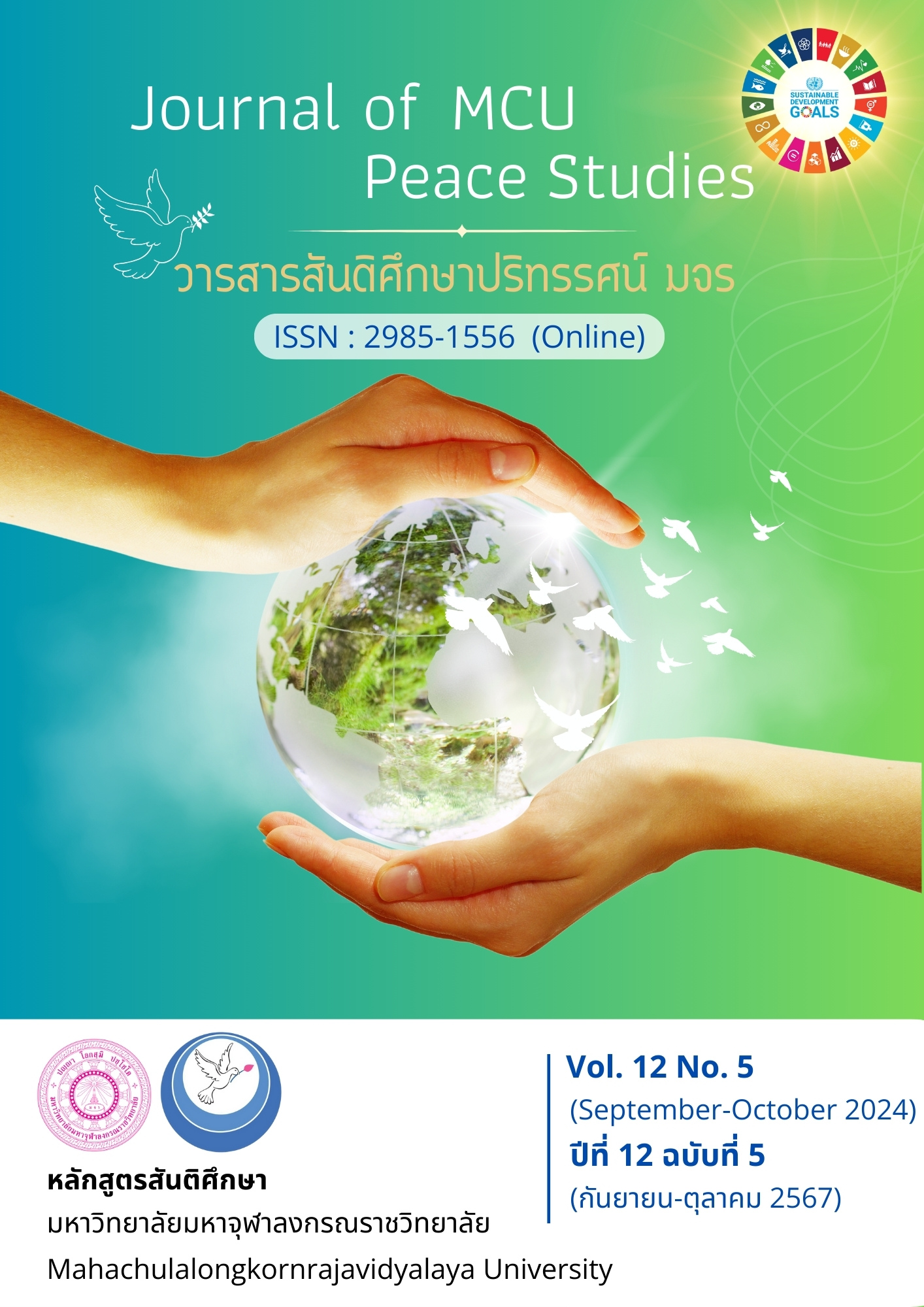การสังเคราะห์นวัตกรรมจิตตปัญญาศึกษาพัฒนาจิตวิญญาณความเป็นครูของครูรุ่นใหม่
Main Article Content
บทคัดย่อ
การวิจัยนี้มีวัตถุประสงค์เพื่อเพื่อศึกษาองค์ประกอบจิตวิญญาณความเป็นครูของครูรุ่นใหม่ และเพื่อพัฒนานวัตกรรมจิตตปัญญาศึกษาส่งเสริมจิตวิญญาณความเป็นครูของครูรุ่นใหม่ดำเนินการวิจัย 3 ระยะ ระยะที่ 1 การสังเคราะห์เอกสารที่เกี่ยวข้องกับนวัตกรรมจิตตปัญญาศึกษาพัฒนาจิตวิญญาณความเป็นครู ระยะที่ 2 ศึกษาข้อมูลเชิงประจักษ์ ณ สถานศึกษาที่เกี่ยวข้องกับการจัดกิจกรรมจิตตปัญญาศึกษา ฐานข้อมูลที่มูลที่ใช้ในการสืบค้น 6 ฐาน ได้แก่ Thailis Google Scholar Eric Research Gate Springer และ ProQuest เครื่องมือวิจัย ได้แก่ แบบสังเคราะห์นวัตกรรมจิตตปัญญาศึกษา แบบประเมินความสอดคล้อง แบบสังเกตการจัดกิจกรรมจิตตปัญญาศึกษา และแบบสัมภาษณ์การจัดกิจกรรมจิตตปัญญาศึกษา ศึกษาข้อมูลเชิงประจักษ์ 3 แห่ง ได้แก่ สถาบันจิตตานุภาพ โรงเรียนลำปลายมาศพัฒนา และ ศูนย์จิตตปัญญาศึกษามหาวิทยาลัยมหิดล
ผลการวิจัยพบว่า 1) องค์ประกอบของจิตวิญญาณความเป็นครูของครูรุ่นใหม่ มี 4 องค์ประกอบ ได้แก่ (1) การรับผิดชอบหน้าที่ของครู (2) การเสียสละในงานของครู (3) ความเสมอภาคต่อนักเรียน และ (4) ความเชื่อมั่นในศักยภาพมนุษย์ 2) แนวทางการใช้นวัตกรรมจิตตปัญญาศึกษาไปใช้ในการส่งเสริมจิตวิญญาณความเป็นครู เป็นการนำนวัตกรรมจิตตปัญญาศึกษาไปใช้ในเชิงกระบวนทัศน์ 3 ลักษณะ ได้แก่ การจัดการเรียนรู้ในรายวิชาชีพครู การจัดอบรมโดยโปรแกรมจิตตปัญญาศึกษา และ การสร้างเครือข่ายชุมชนการเรียนรู้จิตตปัญญาศึกษาออนไลน์
Article Details

อนุญาตภายใต้เงื่อนไข Creative Commons Attribution-NonCommercial-NoDerivatives 4.0 International License.
ทัศนะและความคิดเห็นที่ปรากฏในบทความในวารสาร ถือเป็นความรับผิดชอบของผู้เขียนบทความนั้น และไม่ถือเป็นทัศนะและความรับผิดชอบของกองบรรณาธิการ ยินยอมว่าบทความเป็นลิขสิทธิ์ของวารสาร
เอกสารอ้างอิง
Asdornnithee, S. (2013). Seeking Intellectual Knowledge in Contemplative Education. Nakhon Pathom: Contemplative Education Centre, Mahidol University.
At the Meeting of the President of Rajabhat Universities Nationwide. (2017). The New Strategy of Rajabhat University to Develop Local According to The Royal Patronage. Bangkok: Ministry of Education.
Brantmeier, E. J., Lin, J., & Miller, J. P. (2010). Spirituality, Religion, and Peace Education. USA: Information Age Publishing, Inc.
Chaiyabang, W. (2018). Contemplative Education for Inner Wisdom. (9th ed.). Mahasarakham: Apichat Printing.
Chalakbang, W. (2016). The Spirituality of Teachers: A Key Characteristic of Professional Teachers. Nakhon Phanom University Journal, 6(2), 123-128.
De Souza, M., Bone, J., & Watson, J. (2016). Spirituality Across Disciplines: Research and Practice. Dordrecht: Springer International Publishing.
Duerr, M. (2015). The Tree of Contemplative Practices. Center for Contemplative Mind in Society. Retrieved January 3, 2023, from http://www.contemplativemind.org/ practices/tree
Lawthong, N., & Visessuvanapoom, P. (2010). Development of the Teacher Spirituality Scale. Journal of Research Methodology, 23(1), 25-54.
Mari, P., Siriwan, I., & Chaisuk, P. (2021). A Meditation Teaching Model to Secondary School Students in Accordance with the Meditation Style of Phrabhommamongkholayan (Wiriyang Sirindharo). Journal of Educational Review Faculty of Education in MCU, 8(1), 246-260.
Ministry of Education. (2019). Undergraduate Standards Department of Education (Four-Year Course) B.E. 2562. Bangkok: Ministry of Education.
Secretariat Office of the Teachers Council of Thailand. (2018). Teachers’ Professional Development: Competency Framework. Bangkok: The Teachers' Council of Thailand.
Strategy and Information of Roi-et Provincial. (2017). The Revised Development Plan of Roi Et Province (2018-2022) for the Fiscal Year 2021. Retrieved January 3, 2023, from http://209.15.97.134/ckfinder/userfiles/images/PDF/plan_2565/plan_2561_2565.pdf
Thongmee, P. (2016). Contemplative Education Lesson Plans for Develop Inner Wisdom. Buriram: Leannokkala.
Tongpetchdaesho, P., & Pongsapitch, C. (2015). Teacher Spirituality and Career Advancement Predicting Job Involvement of Teachers. Journal of Chandrakasem, 21(40), 79-88.
Wisetsat, C., & Wisetsat, W. (2021). Learning Management Guideline Using by Contemplative Education to Enhance Teachers Spirituality of Pre-Service Teachers. The Golden Teak: Humanity and Social Science Journal, 27(1), 92-104.


